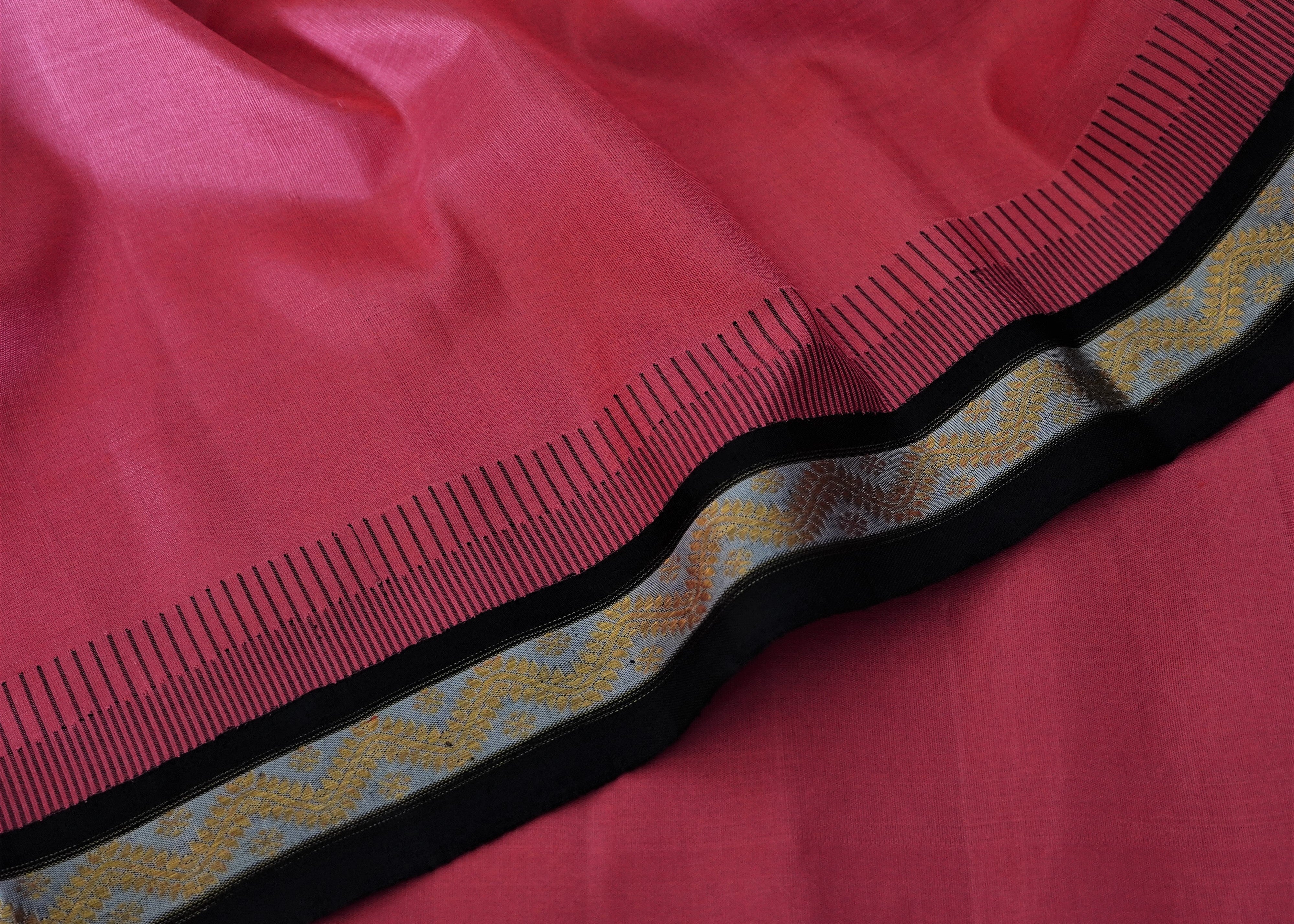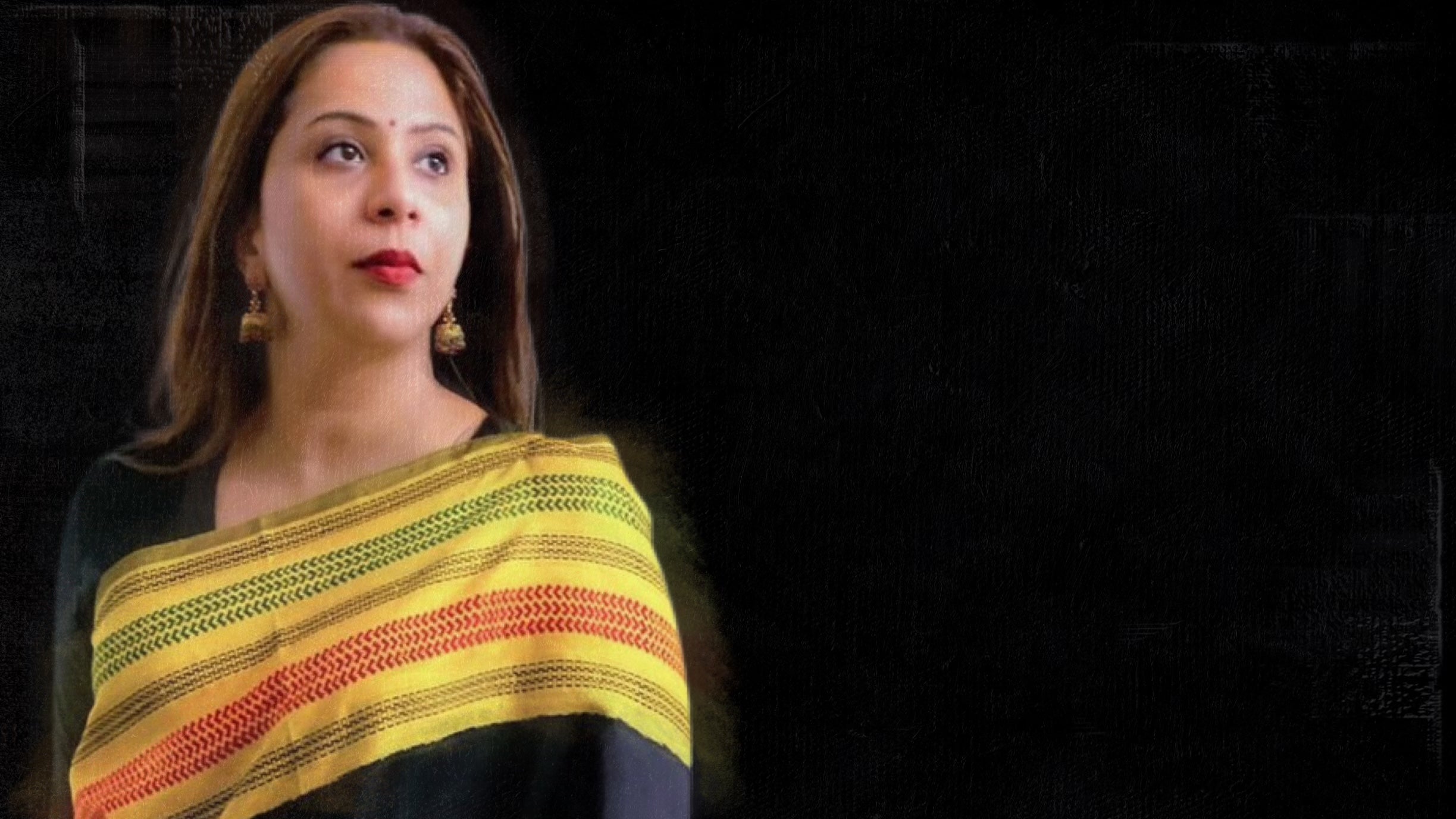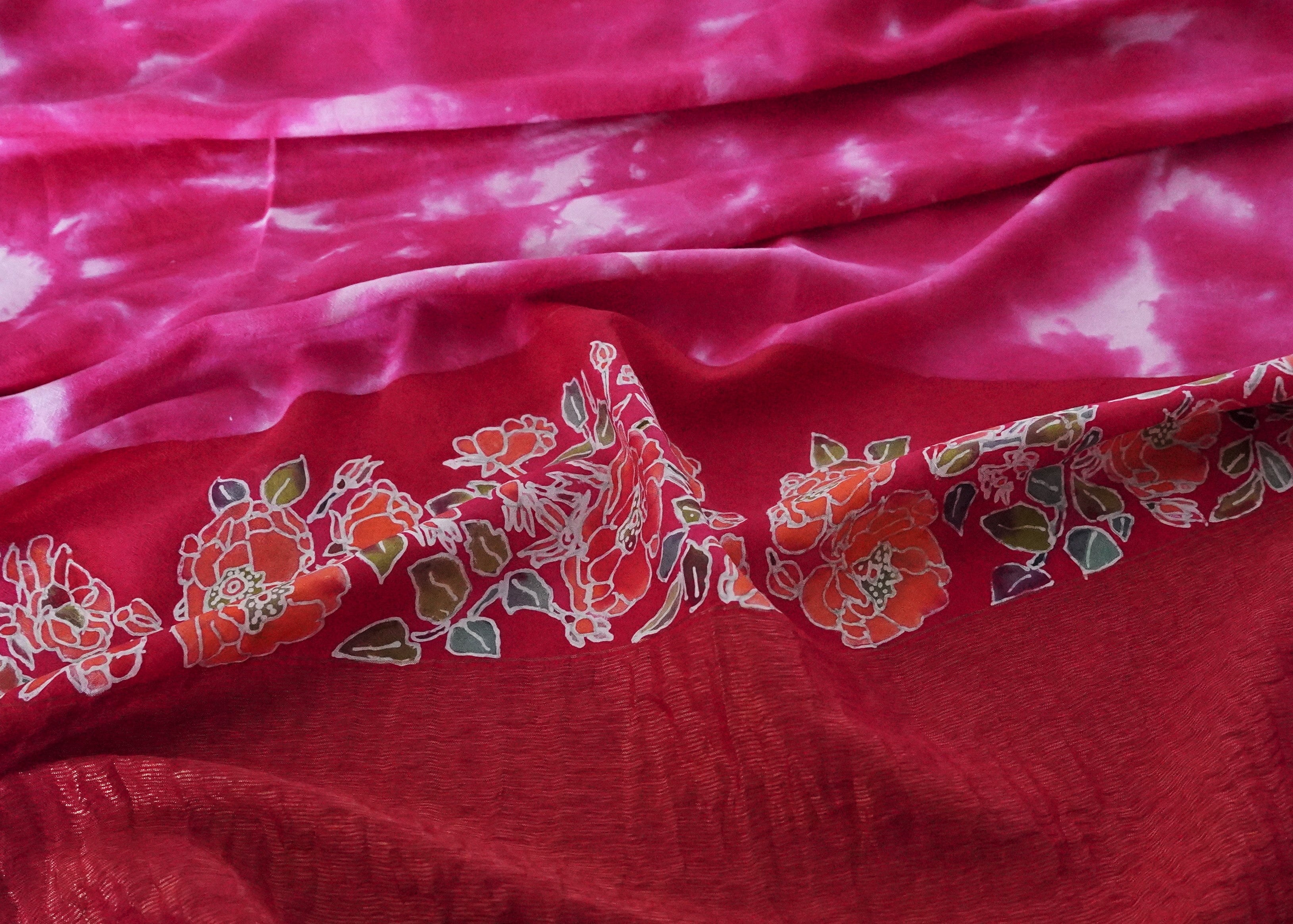
Borders: The Long & Short of It
Travelling across the length & breadth of India can be an exhilarating experience for a textile lover. The sheer variety of weaves, especially saris, enhanced by local craft techniques like embroidery techniques, block prints & resist dyeing techniques, make for a rich & diverse landscape of textiles. Indian households epitomised sustainable living by using items that were made by hand and could disintegrate back into the earth. Our dhurries & rugs were hand-woven in coarse wool or cotton. In hotter regions, the pai or mats were woven from plant fibres & straw. Our bed sheets, sheets, towels, sarongs and sarees are all handwoven, and visiting the local looms is a must-do in any city one visits.

While the weaves look similar to an untrained eye, a discerning textile lover can spot differences that set them apart. Geographical Indications (GIs) are forms of intellectual property that authenticate a product's origins, quality, distinct characteristics and reputation attributable to a particular geographical region. The government of India regularly reviews and approves GI tags for all kinds of crafts, including weaves, print and embroidery techniques intrinsic to a region. Undoubtedly, these GI certificates in India have been instrumental in promoting and protecting the unique products of the country. The system ensures that the products retain their quality and reputation and provides legal protection to such producers. These certifications also empower & educate the local artisan communities, fostering Indian culture and enabling consumers to experience India's rich and diverse cultural legacy. These certifications are essential when one considers the export market & the possibilities that it holds.
When discussing weaves, one looks for the base material, the motifs & techniques that set a weave apart. The most famous sari weaves have techniques to weave the border and buttas. For instance, Kanchipuram saris are well known for the contrasting "korvai" borders. A similar technique can be found in many weaves, including Gadwal, Uppada, Benaras, Berhampuris, and Moirang Phee. While the technique is commonly found, every weave interprets the borders differently. And these designs have evolved to cater to local tastes and preferences until recently. Global exposure & cross-pollination of ideas is changing the way weavers think about designs today.

The Gadwal saris, woven in Telangana, catered to the women around coastal Andra, Rayalaseema and Telangana. These saris are well known for their fine cotton body and contrasting silk border. This weave allowed the women to wear rich-looking saris without compromising comfort. The Berhampurisaris are well known for their photo Kumba borders. The narrow contrast borders are enhanced with silk motifs in bright & cheerful shades. The morning she employs a jamdani technique on the body to weave delicate floral motifs inspired by the local flavours. The borders feature a narrow contrast border with long conical projections that run into the body. Such contrast border techniques are called "Kadiyal" or "Korial" borders. Kadiyal borders are also found in Benaras, which has numerous designs and is undoubtedly a rich and well-known weave. But today, we want to discuss the korvai borders of Kanchipuram silks, particularly what sets them apart.
Local art is always syncretic and evolves with time, and one look at the architecture, landscape & local flora and fauna will help understand how these crafts may have evolved. For instance, the weaves of Orissa are heavily influenced by the Temples of the region, particularly Konark. Likewise, Kanchipuram silks draw their inspiration from the beautiful temples that dot the length & breadth of the landscape. Kanchipuram town is famous for many ancient temples, and these architectural styles have had a lasting impact on the weavers of this region. Sharp & accurate geometric proportions contrast well-rounded motifs. Motifs like the annam (bird), chakram (wheel), paun (gold coin)& manga (mango) still dominate the weaves, even in this age of computerised designs. The borders are at least 4 inches wide, and long 12-inch borders are not uncommon. What is uncommon, however, is narrow 2-3 inch borders. Have you ever wondered why?

Indeed a weaver who can weave delicate motifs & manoeuvre complicated weave setups can weave narrow borders typical to berhampuris, for instance. What we concluded was that narrow border saris are atypical to Kanchipurams. There are some practical difficulties in weaving a narrow border due to Kanchipuram's heavy & wide loom structure; however, the most crucial factor is purpose. The vast contrast borders in deep colours like emerald green and Markku provided a suitable canvas to weave zari motifs that stood out and gave the saris the rich appeal they were known for. The usage of zari made these saris more expensive and prized than other weaves, and there was a need for these saris to establish that majestic appeal. Narrow, delicate borders were not part of the Kanchipuram design vocabulary. Kanchipuram saris were also woven wider than other saris. While most saris in India are 42 inches wide, Kanchipuram silks are woven 46 inches. A two-inch border hence would add no beauty on such a large & wide canvas, and all the additional labour would amount to nothing. This does not mean narrow borders were not woven. One can find narrow border saris in the non-korai format like viagra oasis. It is said that narrow border saris were woven on request or to cater to women who wanted simple silks but always in limited quantities. 
If you and your family members possess & love kanchipurams, do take them out and check their borders. We would love to hear from you about how their borders have been woven. You know you have struck gold if you find a narrow korvai border!
About the author: Priyanka is a sari lover & deeply passionate about weaves. She combines her love for writing & weaves by developing original content for Parvai. The opinions expressed in this article are Parvai's. Copyright laws bind this content.




Leave a comment
This site is protected by hCaptcha and the hCaptcha Privacy Policy and Terms of Service apply.